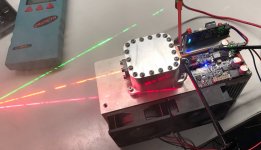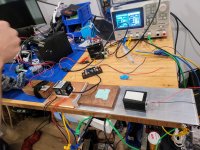You can get the 488nm sharp laser diodes wavelength selected from 475nm-500nm for about 400$ per diode (if you order only a few and not 2k or more. This is definitely much cheaper than the cost of a high level cooling/heating assembly and can be just inserted into the usual diode mounts.
Does not seem like it. You would need two of these diodes, so thats already 800$. If you need to purchase a "few" that means 10?
That would be 8000$ right there. You would still need a driver and a mount + optics.
Even if we assume that you only need to purchase three of these special diodes, you would be at 2400$ excluding driver / optics / mount.
Selecting a few 488nm diodes and using my module would mean <2000€ (I was asking for 1020€ for a module with the expensive 633nm diode) for both modules including driver. I would buy my selected diodes from Phillip, I know he has some and I assume they would not be much much more expensive than the normal price. So assuming 50€ per diode, we would be around 1850€ for both modules.
So cheaper and less work. Also fully sealed, so no worries about dirt.
And these modules would have the advantage of being able to tune the wavelength to some degree.
SURE! these modules are not "AliExpress pointer" cheap, but they are quite cheap for the advantages and wavelengths they offer. Where would you get a 613nm 100mW laser thats tunable between 613 and ±640nm for this price?
If you calculate all the materiales used, you will see that I do not make a fortune with these (if someone would buy them). Actually quite the opposite, the work the modules take, the equipment needed and so on. If I would be running a company, these needed to be at least double the price for work alone!
However I am still interested, where would you get these diodes? I only know topgan lasers that sell custom diodes in low quantities. These are quite expensive and they only offer between 420 and 460nm with 50mW.
Last edited:






